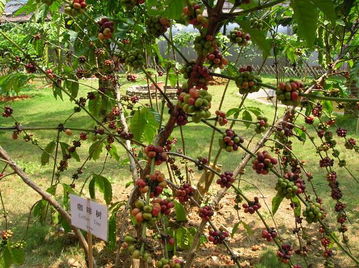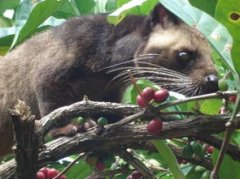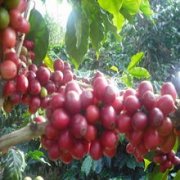Two of the oldest native species of coffee
Typica: The oldest indigenous variety of Ethiopia, from which all Arabica is derived. Belong to the elegant flavor of the old coffee, but the constitution is weak, disease resistance is poor easy to catch rust leaf disease, fruit yield is also less, does not meet economic benefits. In recent years, Tibika has gradually been replaced by Kadura and Kaduai in Central and South America, becoming increasingly rare. Tibica, though delicious, is far less popular than bourbon. One of the characteristics of Tibica is that its top leaves are bronzed. We are familiar with the Mantenin, Blue Mountain, Elephant Bean, Kona, Yunnan Small Round Bean, Rose Summer, etc., are all derived varieties of Tibika. Tibika's beans are larger, pointed oval or thin pointed, different from Bourbon's round beans.
Bourbon (Bourbon): tied with Tibica as an ancient fine variety. Some botanists even believe that Boben is a variant of the early Tibica transplanted to Yemen, and the bean shape changes from thin and pointed to round. It wasn't until 1715 that the French transplanted the Yemeni mocha round bean to the island of Bourbon on the east coast of Africa, which began to receive attention and the name round bourbon. Bourbon, which spread to Brazil and Central and South America in 1727, is also a round bean. In addition, in 1732 Britain transplanted Yemeni mocha to St. Helena Island, which is also a round bean. Interestingly, it did not pass through Bourbon Island, but was named Green Top Bourbon. Therefore, it is a big misunderstanding in the industry that all Bourbon beans in the world come from Bourbon Island. It is important to recognize the fact that there are many round-bodied bourbon beans that travel directly from Yemen without passing through Bourbon Island. In 1810, some of the round beans on Bourbon Island mutated into pointed beans, also known as "Bourbon pointed beans," whose caffeine content is only half that of ordinary coffee. The yield is low and the constitution is weak. It is extremely rare.
In addition to Ethiopia, the origin of Arabica, the mutant species or hybrid varieties cultivated or discovered in Central and South America, India and East Africa at present are mainly Tibica and Boben, and the gene complexity is far less than Ethiopia, which is the main reason why Arabica outside Ethiopia is weak and has poor disease resistance.
In addition, the biggest common ground between Bourbon and Tibica is that they must have shade trees to help block the sun. These two ancient varieties, such as trees without shade, will adversely grow and flavor development.

Important Notice :
前街咖啡 FrontStreet Coffee has moved to new addredd:
FrontStreet Coffee Address: 315,Donghua East Road,GuangZhou
Tel:020 38364473
- Prev

The world's most expensive coffee Kopi Luwak
Kopi Luwak is a traditional specialty in some Indonesian islands, such as Java, Sumatra, Bali and Sulawesi. The civet only contains this unique coffee in its feces after eating the local coffee cherry fruit. In fact, the official name of Kopi Luwak is Kopi Luwak. Kopi means coffee in Indonesian and Luwak is a kind of seal.
- Next

A brief introduction to the Gene Mutants of Coffee species
Kenya [SL28] and [SL34]: French and British missionaries and researchers sifted in Kenya at the beginning of the 20th century
Related
- Beginners will see the "Coffee pull flower" guide!
- What is the difference between ice blog purified milk and ordinary milk coffee?
- Why is the Philippines the largest producer of crops in Liberia?
- For coffee extraction, should the fine powder be retained?
- How does extracted espresso fill pressed powder? How much strength does it take to press the powder?
- How to make jasmine cold extract coffee? Is the jasmine + latte good?
- Will this little toy really make the coffee taste better? How does Lily Drip affect coffee extraction?
- Will the action of slapping the filter cup also affect coffee extraction?
- What's the difference between powder-to-water ratio and powder-to-liquid ratio?
- What is the Ethiopian local species? What does it have to do with Heirloom native species?

